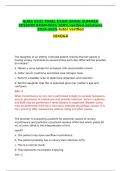Samenvatting
Samenvatting The Psychology of Influence - The Psychology of Media and Communication (6463PS032Y)
- Instelling
- Universiteit Leiden (UL)
Samenvatting The Psychology of Influence - The Psychology of Media and Communication (6463PS032Y)
[Meer zien]














